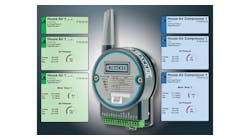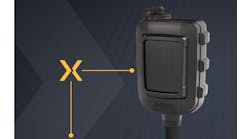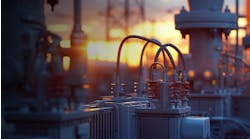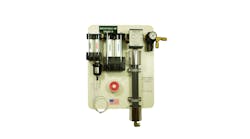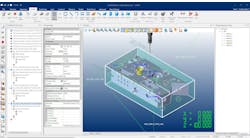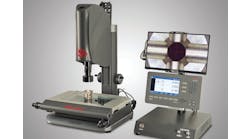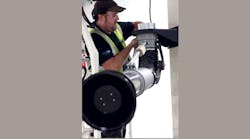The High Temperature Research Centre opening this spring near Coventry, England, will be a collaborative venture for Rolls-Royce PLC and the University of Birmingham. It will be capable of production-scale research and product development, and function as a self-sufficient investment casting foundry — outfitted for core production, wax and shell casting, chemical leaching and etching, and abrasive blasting and emery dress finishing, for aerospace and demanding industrial markets, as well as measurement and inspection, and research and testing labs.
The 5,800-sqm HTRC has been majority-funded by Rolls-Royce (£40 million; est. $57 million), with a grant (£20 million; est. $28.4 million) through the U.K.’s Higher Education Funding Council.
One of the noteworthy design elements of the high-tech foundry will be an advanced dust and fume extraction process described as an “intelligent LEV system.”
Western Air Ducts, headquartered at Bath, designed and installed the local exhaust ventilation (LEV) system with the understanding that environmental control could be critical to the quality of the foundry’s processes and products. “We are delighted to have won this prestigious contract, which was awarded after a competitive tender process that involved extensive discussion with the client as, with such a complex project, it was vital that the selected supplier would be able to work in close partnership with the client,” Western Air managing director Chris Lintern commented.
One of its primary design challenges was that the HTRC’s sponsors required a highly flexible LEV solution, not only in the initial phase but also to “future proof” the building – meaning the anticipated future installation of various different machines and processes.
In addition, the design and construction of the HTRC was set on an ambitious schedule, so that during the initial LEV design stage the shop-floor production equipment that is to be vented had not yet been selected (although, the “zones of activity” had been defined.)
To address this demand for flexibility, Western Air Ducts designed a comprehensive LEV system consisting of eight independent systems, each one serving a particular area in the foundry and each being equipped with the developer’s patented Inteliair™ system, to provide maximum control and energy efficiency.
As described by Western, Inteliair is an intelligent air-control system that simultaneously reduces operating costs, lowers the “carbon footprint,” and improves air quality by optimizing the efficiency of dust extraction, fume extraction and ventilation systems. All these are achieved by automatic continuous monitoring of demand, and regulation of the extraction or supply of air in accordance with that demand – providing potential energy-cost savings of over 40%.
The principle behind Inteliair involves an integral programmable logic controller in the air control system. This optimizes the efficiency of dust extraction, fume extraction and ventilation systems by continuously monitoring demand, and then regulating the extraction or supply of air in accord with that demand.
More traditional LEV systems are unable to react to actual demand — being simply either “on” or “off” — and resulting in low operational efficiency, high energy costs and consequent environmental impact. All these issues have been addressed by the Western Air Ducts system design.
Although the Inteliair system can be retrofitted, the fact that it was in this case specified from the outset meant that the HTRC system could be accurately sized based on actual usage (as opposed to the total number of positions) resulting in a reduction in initial capital equipment cost.
